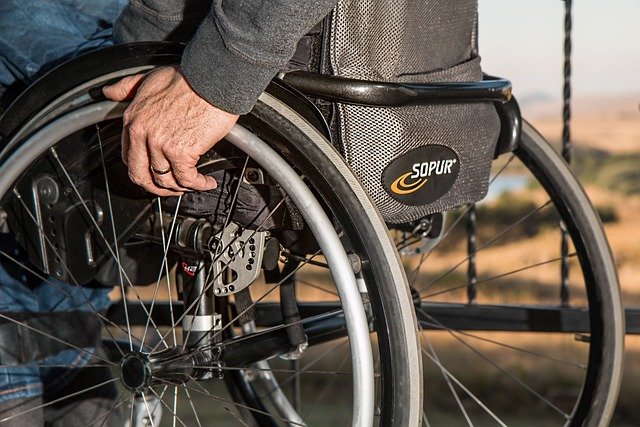Daycab Semi Trucks for Sale: A Practical Buying Guide
Daycab semi trucks represent a significant segment of the commercial trucking market, designed specifically for short-haul operations where drivers return home daily. Unlike sleeper cabs, these vehicles prioritize maneuverability, fuel efficiency, and operational cost-effectiveness over long-distance comfort features. Understanding the various configurations, specifications, and purchasing considerations becomes essential for fleet operators and owner-operators seeking to optimize their regional transportation operations.

Daycab semi trucks serve as the backbone of regional freight transportation, offering specialized solutions for businesses that require efficient short-haul operations. These vehicles eliminate the sleeping compartment found in over-the-road trucks, creating a more compact design that enhances maneuverability in urban environments and tight loading facilities.
Common Daycab Configurations and Use Cases
Daycab trucks typically feature several standard configurations to meet diverse operational needs. The most common setup includes a 4x2 axle arrangement with single drive axles, suitable for lighter loads and regional delivery routes. For heavier applications, 6x4 configurations with tandem drive axles provide increased traction and payload capacity.
Wheelbase options generally range from 120 to 180 inches, with shorter wheelbases offering superior maneuverability for urban delivery and drayage operations. Longer wheelbases provide better ride quality and stability for highway regional routes. Primary use cases include regional delivery services covering 200-500 mile radius operations, port drayage for container transportation, vocational applications like concrete mixing and refuse collection, and local distribution for retail and manufacturing facilities.
Key Technical Specifications and Features
When evaluating daycab trucks, several critical specifications require careful consideration. Engine options typically range from 350 to 500 horsepower, with torque ratings between 1,250 and 1,850 lb-ft. Popular engine manufacturers include Cummins, Detroit Diesel, and PACCAR, each offering different fuel efficiency and maintenance characteristics.
Transmission choices include manual, automated manual, and automatic systems. Automated manual transmissions have gained popularity due to improved fuel economy and reduced driver fatigue. Gross Vehicle Weight Ratings (GVWR) commonly range from 52,000 to 80,000 pounds, depending on axle configurations and intended applications.
Axle ratios affect both fuel efficiency and performance, with typical ranges from 2.47:1 to 4.30:1. Lower ratios favor fuel economy on highways, while higher ratios provide better acceleration and hill-climbing ability. Fuel efficiency expectations vary from 6 to 9 miles per gallon, depending on application, driving conditions, and specifications.
New vs. Used Daycab Comparison
New daycab trucks offer the latest emission technology, full warranty coverage, and predictable maintenance schedules. Benefits include advanced safety features, improved fuel efficiency, and compliance with current environmental regulations. However, new trucks require significant capital investment, with prices ranging from $120,000 to $180,000 depending on specifications.
Used daycabs provide immediate availability and lower initial costs, typically ranging from $40,000 to $100,000 based on age, mileage, and condition. Potential drawbacks include unknown maintenance history, possible reliability issues, and shorter remaining useful life.
When inspecting used trucks, examine engine hours versus mileage ratios, frame condition for cracks or repairs, transmission performance during test drives, emission system functionality, and comprehensive maintenance records. Check brake components, tire wear patterns, electrical systems, and fluid leaks throughout the vehicle.
Pricing and Financing Considerations
Daycab truck pricing varies significantly based on specifications, manufacturer, and market conditions. Entry-level new trucks typically start around $120,000, while fully-equipped models can exceed $180,000. Used truck prices depend heavily on age, mileage, and maintenance history.
| Truck Category | Price Range | Typical Age/Mileage | Key Considerations |
|---|---|---|---|
| New Daycab | $120,000 - $180,000 | Current model year | Full warranty, latest technology |
| Late Model Used | $80,000 - $120,000 | 1-3 years, 100k-300k miles | Limited warranty, proven reliability |
| Mid-Age Used | $50,000 - $80,000 | 4-7 years, 300k-600k miles | Moderate maintenance costs |
| High Mileage Used | $25,000 - $50,000 | 8+ years, 600k+ miles | Higher maintenance, shorter lifespan |
Prices, rates, or cost estimates mentioned in this article are based on the latest available information but may change over time. Independent research is advised before making financial decisions.
Financing options include traditional loans, lease agreements, and rent-to-own programs. Leasing typically requires lower down payments and offers tax advantages, while purchasing builds equity and provides long-term cost benefits. Calculate total cost of ownership including fuel expenses, insurance premiums, maintenance costs, and depreciation when comparing options.
Maintenance and Safety Requirements
Proper maintenance ensures reliable operation and regulatory compliance for daycab trucks. Scheduled service intervals typically occur every 15,000 to 25,000 miles, depending on operating conditions and manufacturer recommendations. Critical maintenance items include engine oil and filter changes, transmission service, differential maintenance, and coolant system inspection.
Brake system maintenance requires regular inspection of pads, rotors, and air system components. Tire maintenance involves rotation, pressure monitoring, and tread depth measurement to ensure safe operation and maximize tire life. Lighting systems require periodic inspection to maintain visibility and comply with DOT regulations.
Anti-lock braking systems (ABS) and electronic stability control systems need regular diagnostic checks to ensure proper functionality. DOT and FMCSA compliance requires adherence to Hours of Service regulations, regular vehicle inspections, and driver qualification standards.
Emission system maintenance has become increasingly important with newer trucks featuring selective catalytic reduction (SCR) and diesel particulate filter (DPF) systems. These components require specific maintenance procedures and quality diesel exhaust fluid (DEF) to maintain compliance with environmental regulations.
Regular preventive maintenance programs help minimize unexpected breakdowns, reduce operating costs, and extend vehicle lifespan. Establishing relationships with qualified service providers and maintaining detailed maintenance records supports both operational efficiency and resale value preservation.




